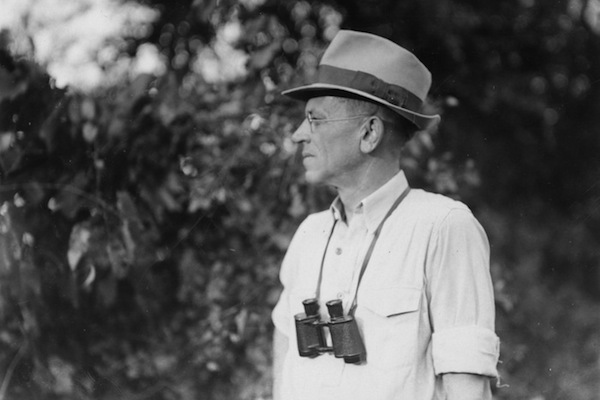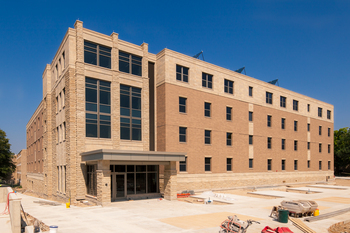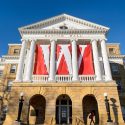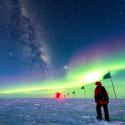With sustainability in mind, new residence hall named for Aldo Leopold

The legacy of Aldo Leopold, a former UW professor considered the father of wildlife management, is being honored with the naming of a UW–Madison residence hall built with an emphasis on sustainability and conservation.
Photo courtesy of the Aldo Leopold Foundation
The UW System Board of Regents today approved the naming of Aldo Leopold Residence Hall, the newest UW–Madison University Housing building, which will become home to 172 students starting in late August.
The new building, which had temporarily been called New 32 Hall, is located next to the Allen Centennial Gardens and Kronshage Residence Hall on the west side of campus, near the shores of Lake Mendota.
“Aldo Leopold was selected as the name for this hall because of the building’s focus on sustainability and conservation,” says Jeff Hinz, assistant to the director of University Housing. “We designed it in a way that will increase resident awareness about thinking, working and living in more sustainable ways, which were principles that guided Aldo Leopold’s career.”

Aldo Leopold Residence Hall features energy efficient construction, solar panels to assist with hot water heating, and monitors for electricity and water consumption throughout the building.
Photo: Joel Ninmann
Leopold is considered by many as the father of wildlife management and of the United States wilderness system. He was a conservationist, forester, philosopher, educator, writer and outdoor enthusiast.
Leopold spent most of his professional career on the UW–Madison campus, arriving in 1924 as the assistant director of the U.S. Forest Products Laboratory. In 1933, he was appointed to be the new chair of game management in the Department of Agricultural Economics and, in 1939, he became the chair of the new Department of Wildlife Management, a position he held until his death in 1948.
“We in the Leopold family are very pleased to hear that you are naming a new building after my father,” says Estella B. Leopold, youngest daughter of the famed conservationist. “He spent many happy and productive years on the university campus walking to and from work each day, and had wonderful colleagues there on campus.”
“We designed it in a way that will increase resident awareness about thinking, working and living in more sustainable ways, which were principles that guided Aldo Leopold’s career.”
Jeff Hinz
The GreenHouse Learning Community, which focuses on sustainability, will relocate this fall from Cole Residence Hall to a portion of Leopold Residence Hall, where students can take advantage of improved facilities and resources. A unique feature of the four-story building is a greenhouse on the top floor where students can grow plants and vegetables year-round.
Other building features include energy efficient construction, solar panels to assist with hot water heating, and monitors for electricity and water consumption throughout the building. Student rooms are double rooms with carpeting and individual room temperature controls. The resident floors include kitchenettes, resident lounges and study areas. The building also offers an on-site classroom, laundry, staff offices and a workshop for students. The workshop will include workbenches, tools, bicycle maintenance equipment, crafting supplies, a resource library, and storage for gardening and kitchen tools.
Aldo Leopold Residence Hall is the last in a series of new buildings constructed by University Housing as part of its 2004-20 Master Plan, designed to meet the demand for on-campus housing by UW–Madison undergraduate students. The master plan also includes several major renovations of existing buildings to meet the needs of tomorrow’s students.
—Brendon Dybdahl
Tags: sustainability, University Housing



